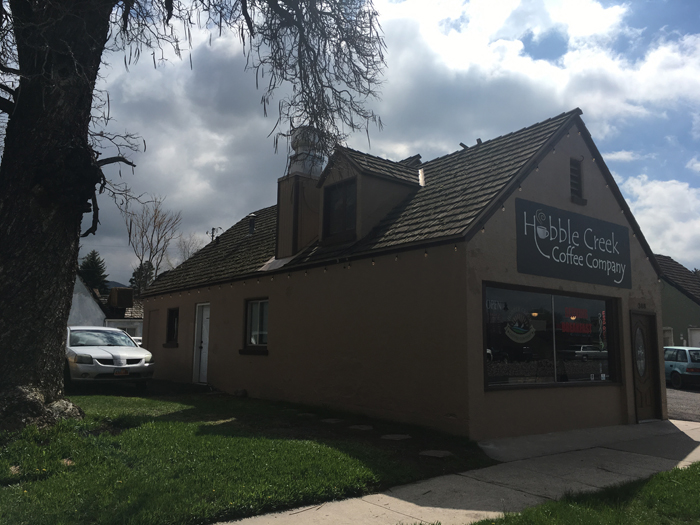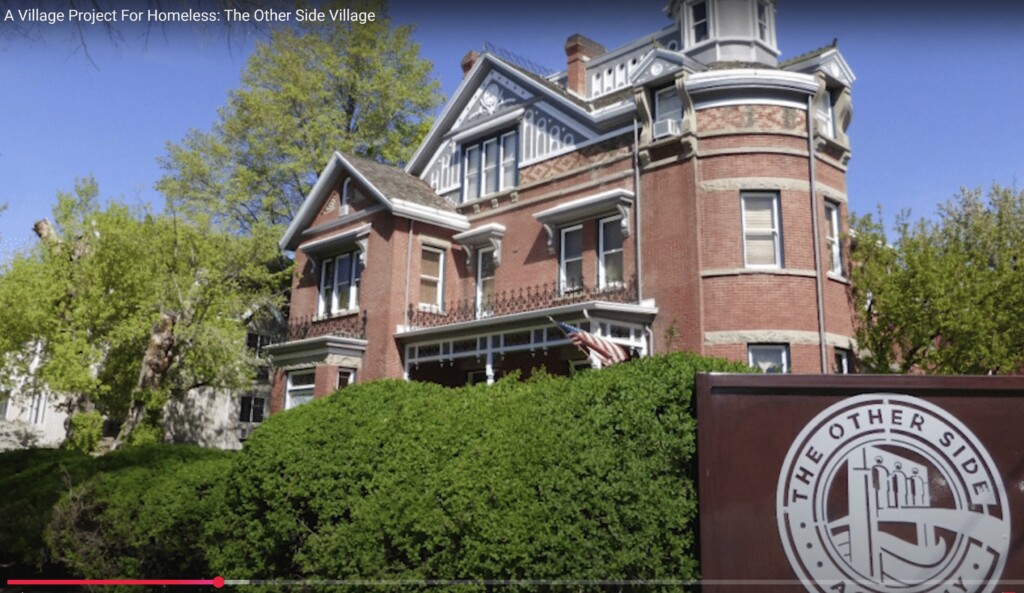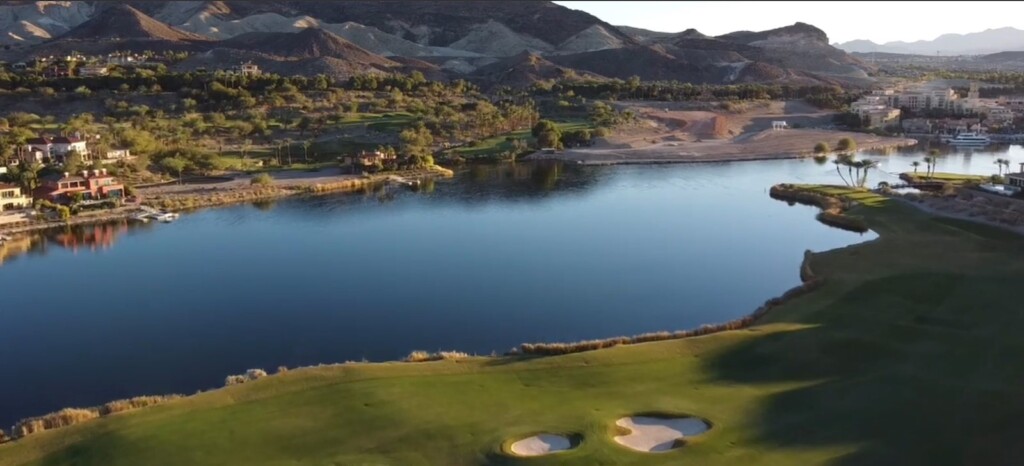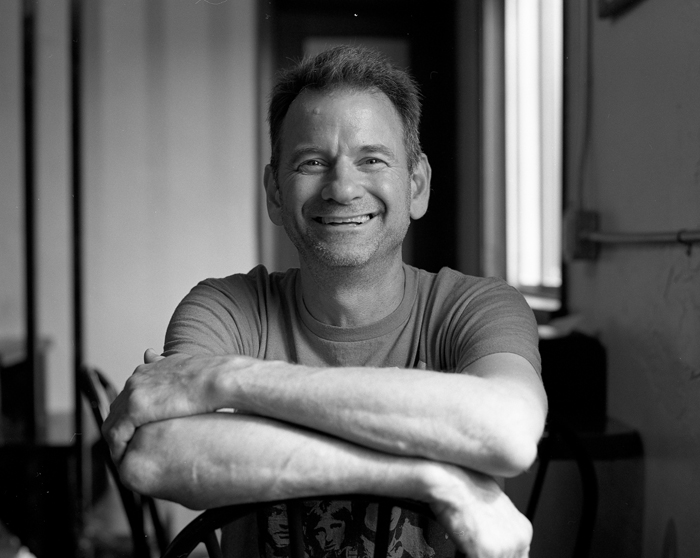
Most people like the smell of coffee, whether they drink it or not. This is fortunate for Mitchell Cline, who roasts coffee in his garage in a suburb of Springville, Utah. Cline’s neighbors, most of whom are Mormon and don’t drink coffee, thank Cline for the nutty and chocolaty scent that wafts through their neighborhood almost daily.
Cline has converted his garage into a semi-industrial roasting kitchen, complete with a high-volume gas line and a Diedrich IR-12, the Mercedes Benz of coffee roasters. When Cline finishes roasting each morning, he bags and ships a few pounds then hauls a few pounds more down to a vintage property on Main Street. Cline renovated the place himself. It bears a sign that reads, Hobble Creek Coffee Company, and this is where he sells the best beans this side of Mount Timpanogos, relying on sound science and a keen palate.
Cline is the first and only roaster on the Wasatch Front’s southern end. He is keeping with Utah tradition and pioneering his way, determined to provide superb and unique roasts to coffeehouses and restaurants throughout the Mountain West. He even pioneered his way to Utah last year. “I moved here because Google said the economy is good and the people are happy,” Cline explains. He visited the area for a couple days, liked what he saw, and just like that, his family relocated. “We just moved here blindly,” he says.
But Utah Valley, to roast and brew coffee? It didn’t start out that way. Cline’s obsession with coffee and unique approach to roasting has been brewing for years. While studying computer programming as a college student at the University of Arizona, Cline worked as a line cook. When he realized that coding in a cubicle all day would toast his brain, he dropped out and focused on his culinary skills. Before long he was working as a chef. Then he completed culinary school in Sacramento, California.
His culinary career took him to Tahoe for a spell, then onto Coeur d’Alene, Idaho, and finally on the road as a head chef for Hollywood film crews. For years, Cline served up lobster and sushi to the likes of Gary Shandling, Pierce Brosnan, Harrison Ford, and Kevin Costner, among others. But in 1999, after marrying his wife, Conchita, life on the road was no longer desirable, so Cline put cheffing on the backburner and got certified as an electrician.
This seems like a radical departure, but Cline sees it all in the same light. “I’m good at putting components together,” he says. For Cline, whether with food or electrical circuitry, his task is to combine disparate parts into a cohesive, functional, and pleasing whole. He did the same with web analytics, which he delved into following his stint as an electrician. He saw opportunity in analytics, so hustled his way into the industry through a relative, trading killer sushi for some training and an introduction. Cline’s ability to creatively yet analytically solve problems served him well and he eventually landed a lucrative gig with IBM. Then one day, without warning, he was laid off.
That’s when Cline began thinking more seriously about coffee. “I decided I was going to create jobs, rather than be a victim of losing my job,” he says. In 2016, he and Conchita took a road trip along the West Coast, hitting cafés and coffeehouses, savoring the fare, doing research. Upon returning home, Cline began sourcing Guatemalan, Ethiopian, Honduran, and Sumatran beans, roasting them in a pan in his kitchen. He determined from the get-go to import only handpicked beans from fair-trade companies so that farmers are taken care of and crops are sustainably cultivated. “I do it this way because it creates a smart, eco-friendly supply chain,” Cline says.
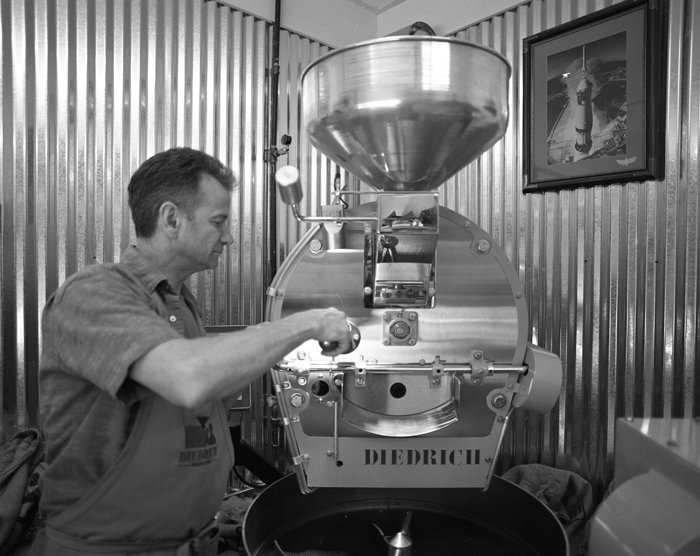 Soon after, Cline attended roasting school in Idaho, acquired a lightly-used Diedrich roaster, drove to Montana to retrieve it, and converted his garage. He subsequently bought the vintage building at 388 Main Street in Springville, and used his engineering and electrical prowess to renovate it. And as if he weren’t busy enough, he began offering breakfast four days a week, frying up amazing omelets.
Soon after, Cline attended roasting school in Idaho, acquired a lightly-used Diedrich roaster, drove to Montana to retrieve it, and converted his garage. He subsequently bought the vintage building at 388 Main Street in Springville, and used his engineering and electrical prowess to renovate it. And as if he weren’t busy enough, he began offering breakfast four days a week, frying up amazing omelets.
Hobble Creek Coffee is a great little hangout. Outside is a drive-thru, and inside you’ll find books, chess, playing cards, an Etch A Sketch, and a guitar—presumably for anyone who wants to play. But better than that is the coffee.
Cline walked me through his roasting and brewing processes. He meticulously tests and retests his roasting methods, dialing in the temperature to within a degree or two, and the cooking time to within seconds. He saves the roasting profiles in a computer that is synced to the roaster. But before any roast hits the market or your palate, Cline carefully cups each one. He grinds out 14 grams of each roast, adds exactly 200 milliliters of water heated to 204°, and allows each to steep for exactly four minutes. Then he sips and profiles each one, charting such qualities as acidity, balance, body, flavor, and aroma.
Coffee, it is said, has over 900 flavor profiles—more than wine. Pay attention and you can detect notes of citrus, berry, walnut, plum, macadamia, butterscotch, leather, and tobacco, to name a few. Some roasters flavor their beans to mimic these notes, but Cline highlights the flavors through roasting and brewing alone. He combines scientific rigor with an acute culinary sensibility.
And the results speak for themselves. For years I’ve tried to brew a good cup of joe at home, but I’ve never been able to match the quality of locally-brewed coffee—until now. I have a bag of Hobble Creek Coffee’s Ethiopian and Chiapas roasts, and I’ve learned, thanks to Cline, how to make a decent pour-over. One morning I swapped a friend’s typical Starbucks crap with one of Cline’s creations and she exclaimed, “Wow. This coffee is good. It doesn’t taste burnt.” “No kidding,” I quipped.
This, I think, will make Mitchell Cline happy. After all, his goal is to get fine and complex roasts into as many homes, restaurants, and coffeehouses as possible. He even offers exclusive, branded roast profiles, allowing buyers to participate in their development. But if you don’t need your own exclusive roast, well, you can still get a great cup at HCC, backed by science. And good taste.